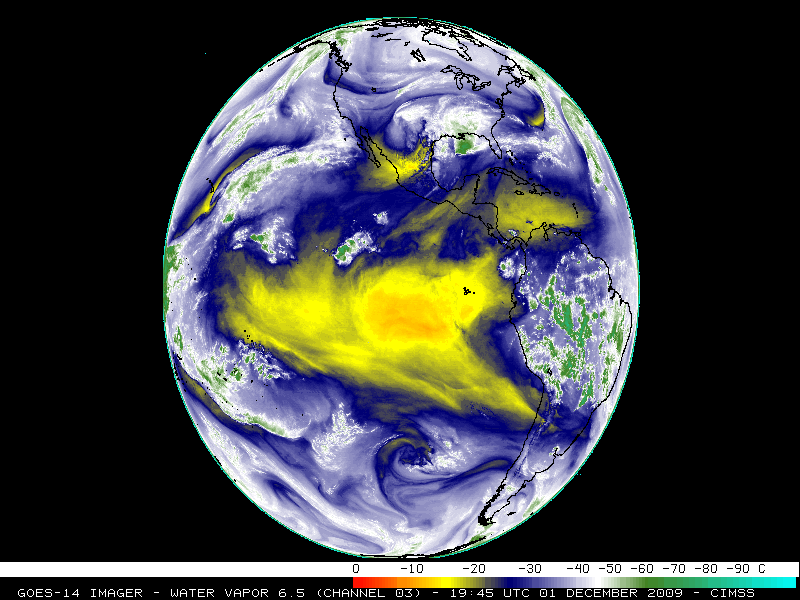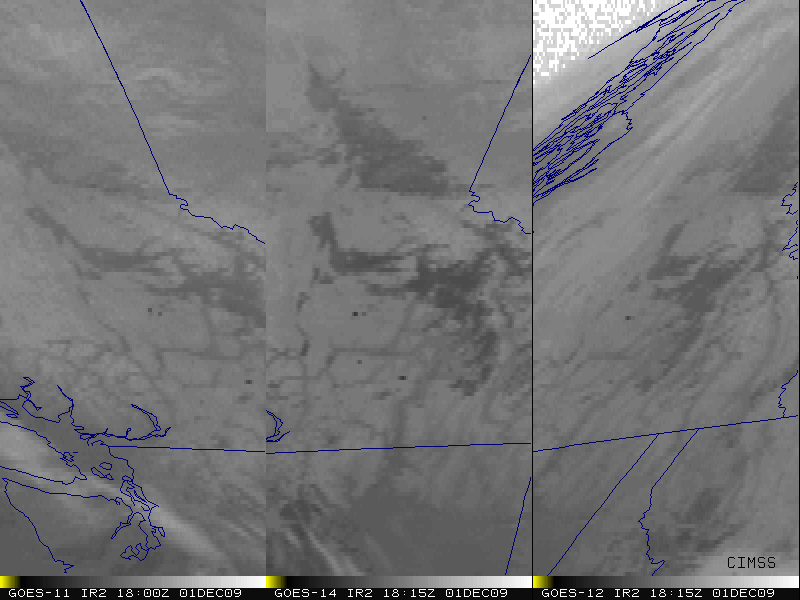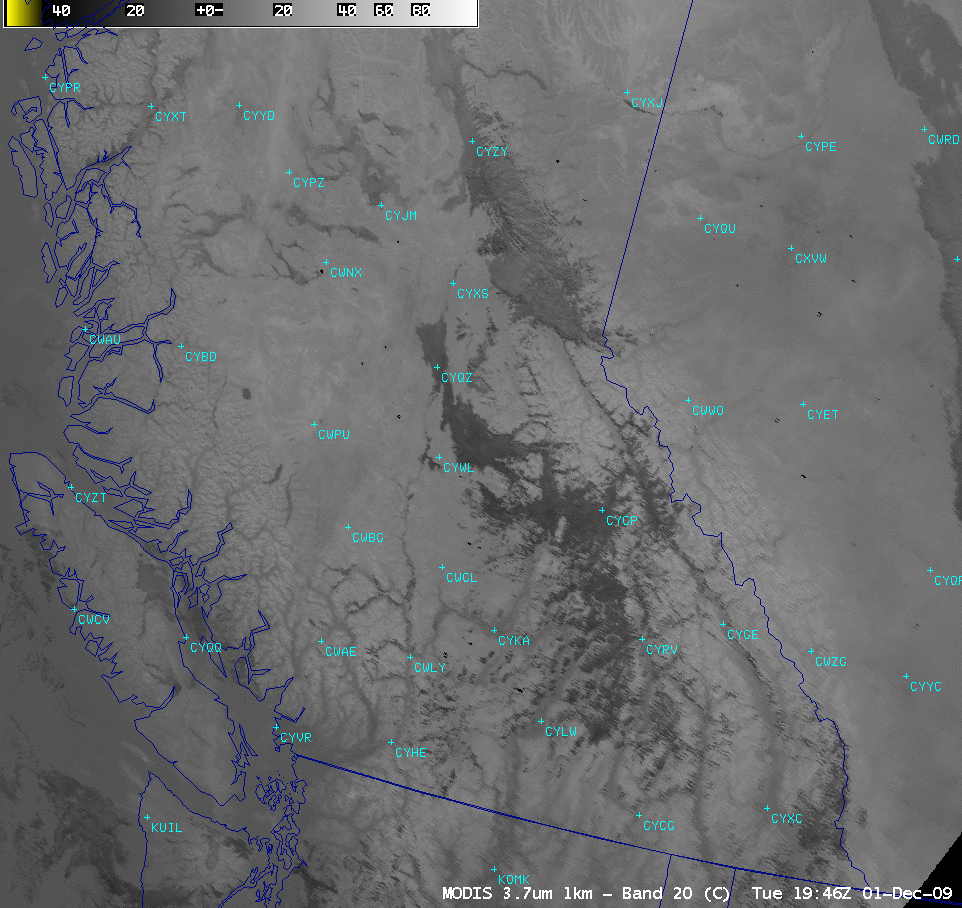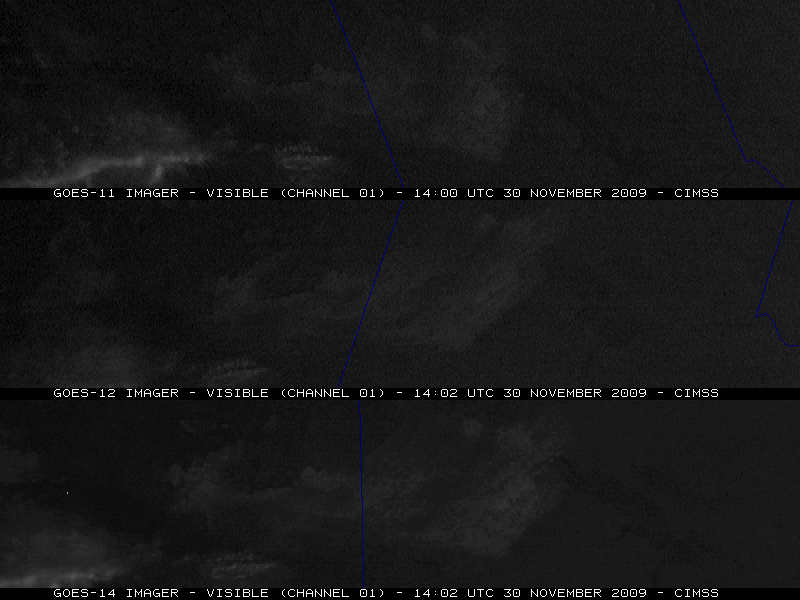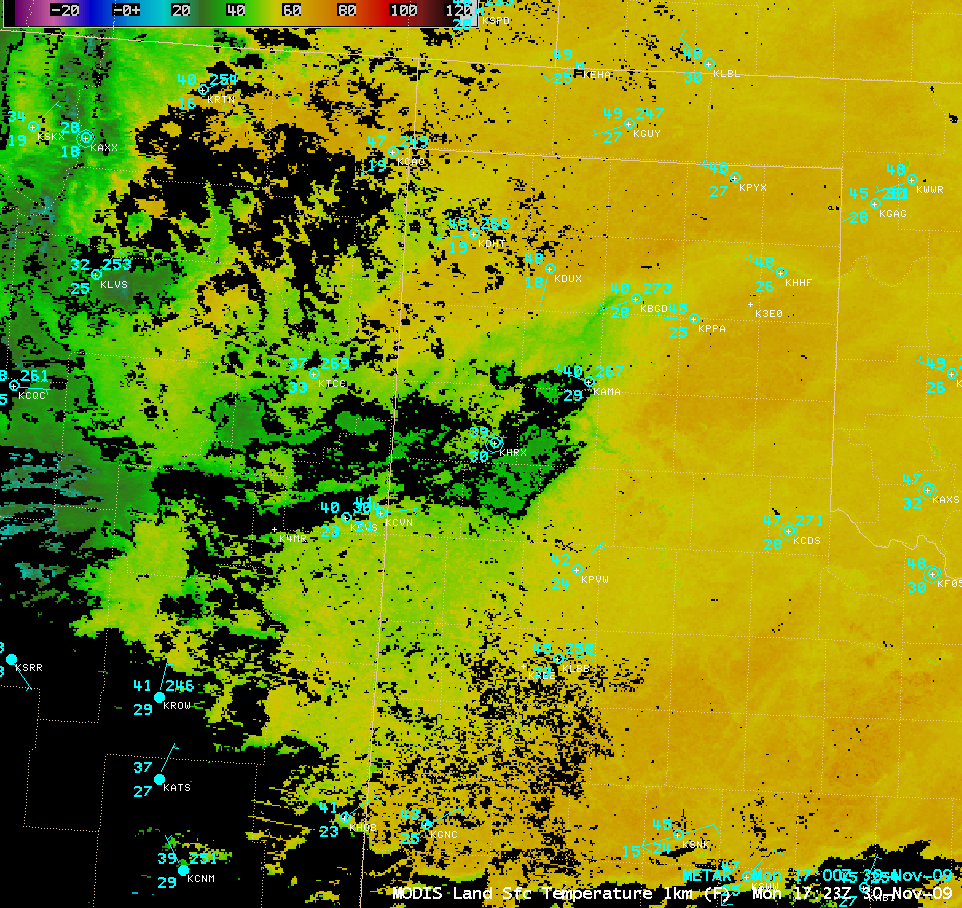Shortly after midnight (EST) on December 1st, GOES-10 was decomissioned and boosted to a disposal orbit (approximately 300 km above the operational orbit). It was shut off because it lacks fuel for the required maneuvers to keep it on station.GOES-K was launched 25 April 1997, with a life expectancy of... Read More
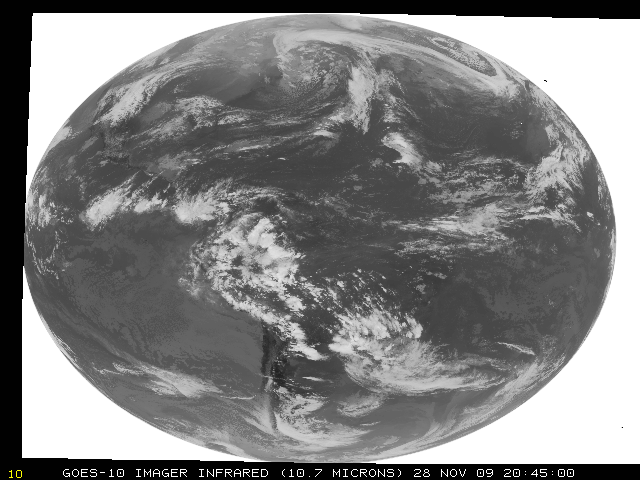
Shortly after midnight (EST) on December 1st, GOES-10 was decomissioned and boosted to a disposal orbit (approximately 300 km above the operational orbit). It was shut off because it lacks fuel for the required maneuvers to keep it on station.
GOES-K was launched 25 April 1997, with a life expectancy of five years. A solar array problem shortly after launch in May of 1997 was nearly fatal to the spacecraft; however, a yaw-flip maneuver (that is, flying the spacecraft upside-down) proved successful and GOES-10 has successfully served data nearly continuously since then. The first visible image from GOES is here. Early examples of Sounder and Imager are also available. For more examples of GOES-10 imagery, click here. GOES-10 served as GOES-West from 27 July 1998 (replacing GOES-9) until 21 July 2006 (when it was replaced by GOES-11). GOES-10 then moved from 135 West Longitude to 60 W Longitude, arriving on station in December 2006 to provide near-continuous data over South America (More information on GOES-10 is available here).
As a Geostationary satellite focused on South America, GOES-10 provided valuable information about the Air France Flight Crash over the Atlantic Ocean, volcanic eruptions over South America. In addition, as it moved from 135 W Longitude to 60 W Longitude, it was in Super Rapid-Scan Operation mode — that is, imagery was collected every minute over limited regions — to give insight into various meteorological phenomena. (For more links to GOES-10 imagery, click the GOES-10 category, or click here).
With the termination of GOES-10 operations, routine satellite observation of South America will fall to GOES-12, the operational GOES-East satellite. However, the operational demands on GOES-East preclude the high temporal observations that GOES-10 provided. For example, much of South America now has routine 15-minute coverage; GOES-East will provide only half-hourly coverage. This image loop shows the motion of a smoke plume — at 15-minute intervals — near the Tocantins River just south to the Amazon Delta. A similar loop from GOES-East is here. Reduced temporal resolution introduces greater error to both cloud-tracked features (derived winds) and fires detected.
Similar views from different vantage points can be important. Consider, for example, the twin views of northeast Brazil in the 4-micron band from GOES-10 and GOES-12.

Both platforms observe the fires in the Amazon River delta in the upper left part of the images. Note, however, that only GOES-East shows a very warm Lake behind Sobradinho Dam on the Sao Francisco River. Indeed, the 3.9-micron sensor has saturated on GOES-East (over the Equator at 75 W), but GOES-10 (over the Equator at 60 W) shows very little signature. This is an excellent example of Sun Glint in the 3.9 micron channel. Solar 3.9-micron radiation reflected from the lake is saturating the instrument on GOES-East. GOES-10, farther east, can look at the same region and not see the Sun Glint.
In contrast to GOES-East and GOES-West data, data from GOES-10 have been remapped before distribution since it arrived at 60 West back in late 2006. The remapping is necessary because the satellite inclination was large; indeed, it was more than 4 degrees on 25 November 2009.
Update: The Final Imager images from GOES-10: 0.65 microns; 3.9 microns; 6.8 microns; 10.7 microns; 12.0 microns; Infrared Channels in a loop.
Current plans are for GOES-13 to replace GOES-12 as GOES-East in April of 2010. Subsequently, GOES-12 will move to 60 W and resume GOES-10’s duties.
View only this post
Read Less


